What Is White Rice And Wild Rice?
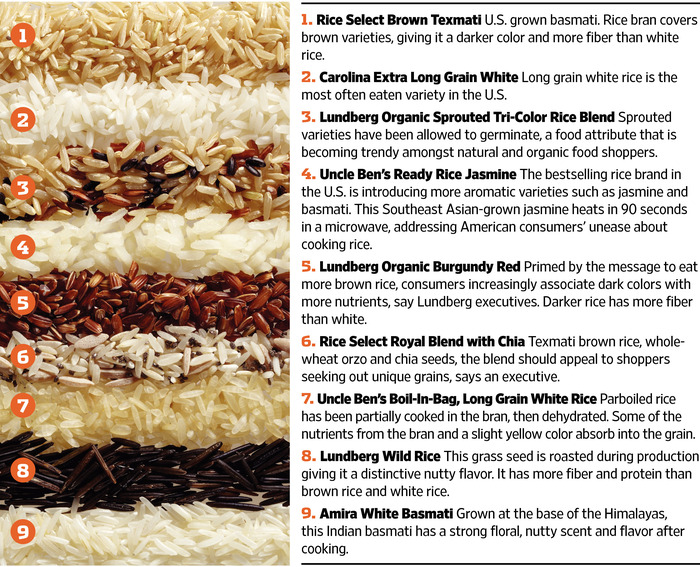
White rice and wild rice are two common types of rice that differ in terms of their grain characteristics, nutritional content, and culinary uses. White rice is a refined grain that has had its bran and germ removed, resulting in a milder taste and softer texture. It is commonly used in a variety of dishes, such as stir-fries and sushi. Wild rice, on the other hand, is a whole grain that is native to North America. It has a nuttier flavor, chewier texture, and is often used in salads, soups, and as a side dish.
White Rice Vs Wild Rice: Overview And Nutritional Content
White rice and wild rice are two popular types of rice that differ in terms of their grain characteristics and nutritional content. White rice is a refined grain that has had its bran and germ removed, resulting in a milder taste and softer texture. It is lower in fiber and nutrients compared to wild rice. On the other hand, wild rice is a whole grain that is high in protein, fiber, and various minerals. It also contains more antioxidants compared to white rice. Overall, wild rice is considered to be the healthier choice due to its higher nutritional value.
White Rice Vs Wild Rice: Origin And Cultivation
White rice and wild rice have different origins and cultivation methods. White rice is primarily cultivated in Asia, particularly in countries like China, India, and Thailand. It has been a staple food in Asian cuisine for centuries. On the other hand, wild rice originates from North America, specifically from northern parts of the United States and Canada. It is harvested from aquatic grasses that grow in freshwater environments like lakes and streams. Wild rice has been used by indigenous peoples in North America for thousands of years and continues to be an important part of their cultural heritage.
Nutritional Comparison
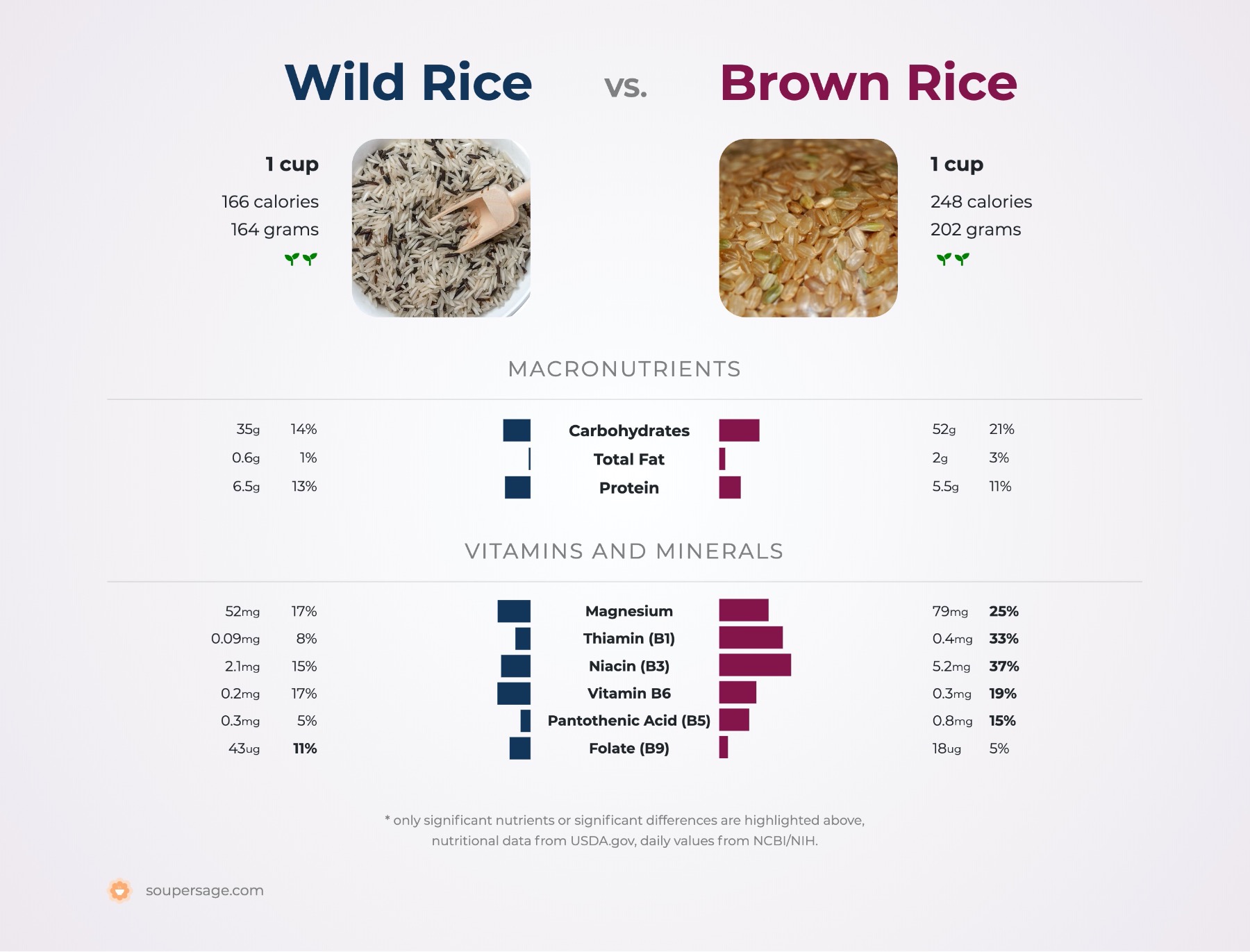
When comparing the nutritional content of white rice and wild rice, there are noticeable differences. Wild rice, being the more nutritious option, is higher in protein, fiber, potassium, and zinc compared to both white and brown rice. It is also lower in calories, fat, and carbohydrates. White rice, on the other hand, is lower in these nutrients and lacks the same level of nutritional value as wild rice. Opting for wild rice can provide a more balanced and nutrient-dense option for those looking to incorporate healthier grains into their diet.
White Rice Vs Wild Rice: Differences In Macronutrients And Micronutrients
When comparing the macronutrients and micronutrients in white rice and wild rice, there are noticeable differences. Wild rice contains higher amounts of protein, fiber, potassium, and zinc compared to both white and brown rice. It is also lower in calories, fat, and carbohydrates. On the other hand, white rice is lower in these nutrients and lacks the same level of nutritional value as wild rice. Opting for wild rice can provide a more balanced and nutrient-dense option for those looking to incorporate healthier grains into their diet.
White Rice Vs Wild Rice: Health Benefits And Dietary Considerations
White rice and wild rice have different health benefits and dietary considerations. Wild rice is a more nutrient-dense option, with higher protein, fiber, potassium, and zinc content compared to white rice. It is also lower in calories, fat, and carbohydrates. Incorporating wild rice into your diet can help with weight management, promote heart health, and support healthy digestion. On the other hand, white rice is a more easily digestible option, making it suitable for those with sensitive stomachs or digestive issues. However, it is lower in nutrients and can cause blood sugar spikes. Consulting a healthcare professional or nutritionist can help determine the best rice choice for your specific dietary needs.
Cooking And Preparation
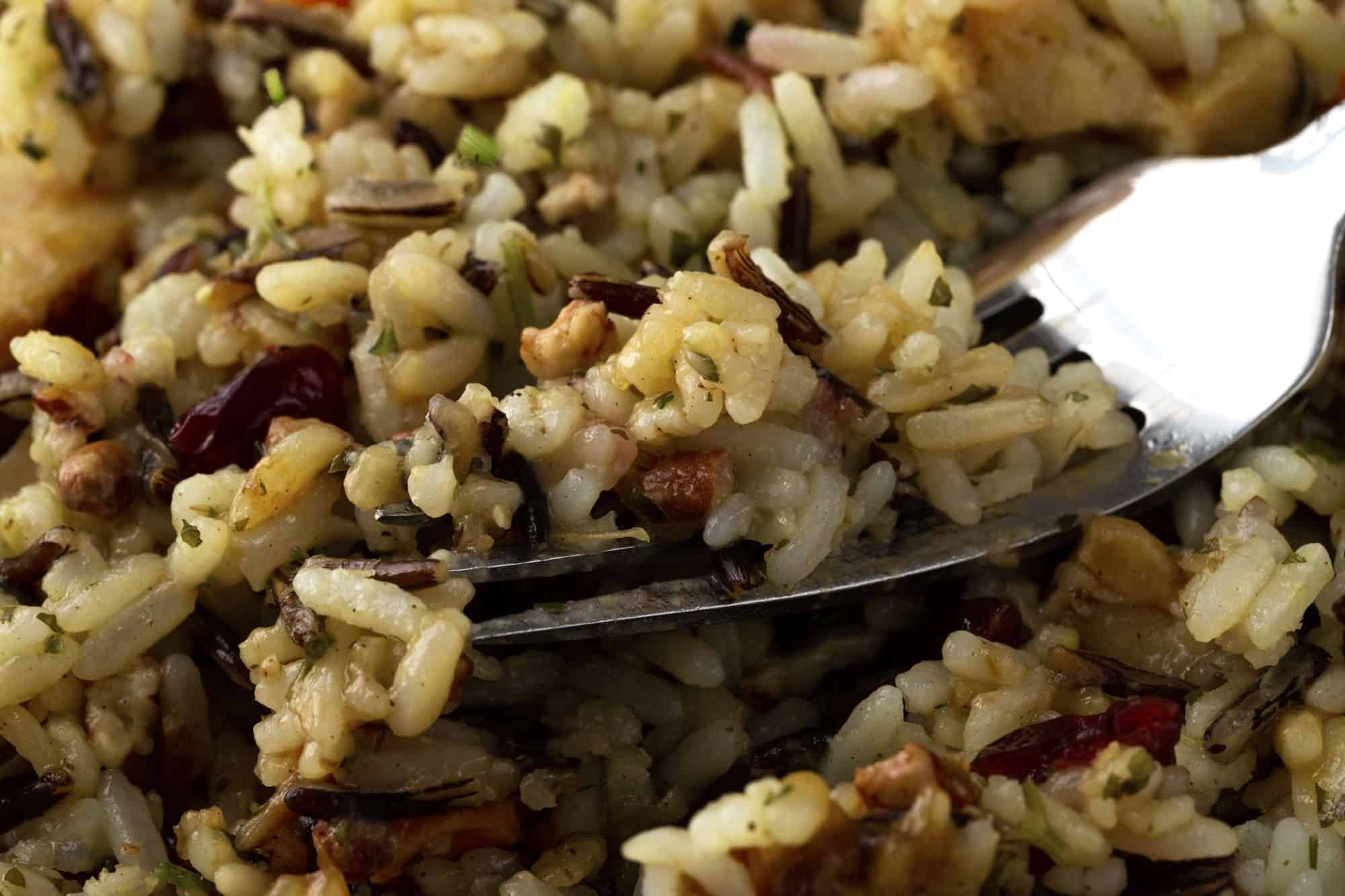
When it comes to cooking and preparing white rice and wild rice, there are a few key differences to keep in mind.
White rice is known for its quick and easy cooking process. It typically requires a ratio of 1:2 parts rice to water and can be cooked on the stovetop or in a rice cooker. The cooking time for white rice is usually around 15-20 minutes.
On the other hand, wild rice takes a bit longer to cook due to its chewier texture. It requires a ratio of 1:3 parts rice to water and typically takes around 45 minutes to an hour to cook. Wild rice can be cooked on the stovetop, in a rice cooker, or even in the oven.
Both types of rice can be seasoned with various herbs, spices, or broth to enhance their flavors. They can be served as a side dish, mixed into salads, or used in a variety of recipes.
Overall, the cooking and preparation methods for white rice and wild rice may differ, but they both offer delicious and versatile options to enjoy.
White Rice Vs Wild Rice: Cooking Methods And Cooking Time
When it comes to cooking methods and cooking time, white rice and wild rice differ significantly. White rice is known for its quick and easy cooking process. It typically requires a ratio of 1 part rice to 2 parts water and can be cooked on the stovetop or in a rice cooker. The cooking time for white rice is usually around 15-20 minutes. On the other hand, wild rice takes longer to cook due to its chewier texture. It requires a ratio of 1 part rice to 3 parts water and typically takes around 45 minutes to an hour to cook. Wild rice can be cooked on the stovetop, in a rice cooker, or even in the oven. Both types of rice can be seasoned with various herbs, spices, or broth to enhance their flavors. They can be served as a side dish, mixed into salads, or used in a variety of recipes. Overall, the cooking and preparation methods for white rice and wild rice may differ, but they both offer delicious and versatile options to enjoy.
White Rice Vs Wild Rice: Recipes And Culinary Uses
White rice and wild rice can both be used in a variety of recipes and culinary dishes. White rice is commonly used as a side dish, paired with stir-fries, curries, or as a base for dishes like sushi. It is also a key ingredient in dishes such as fried rice or rice pilaf. On the other hand, wild rice has a nutty flavor and chewier texture, making it a great addition to salads, soups, and grain bowls. It can also be used in stuffing, casseroles, or as a side dish on its own. The versatility of both types of rice allows for endless culinary creations.
Flavor And Texture
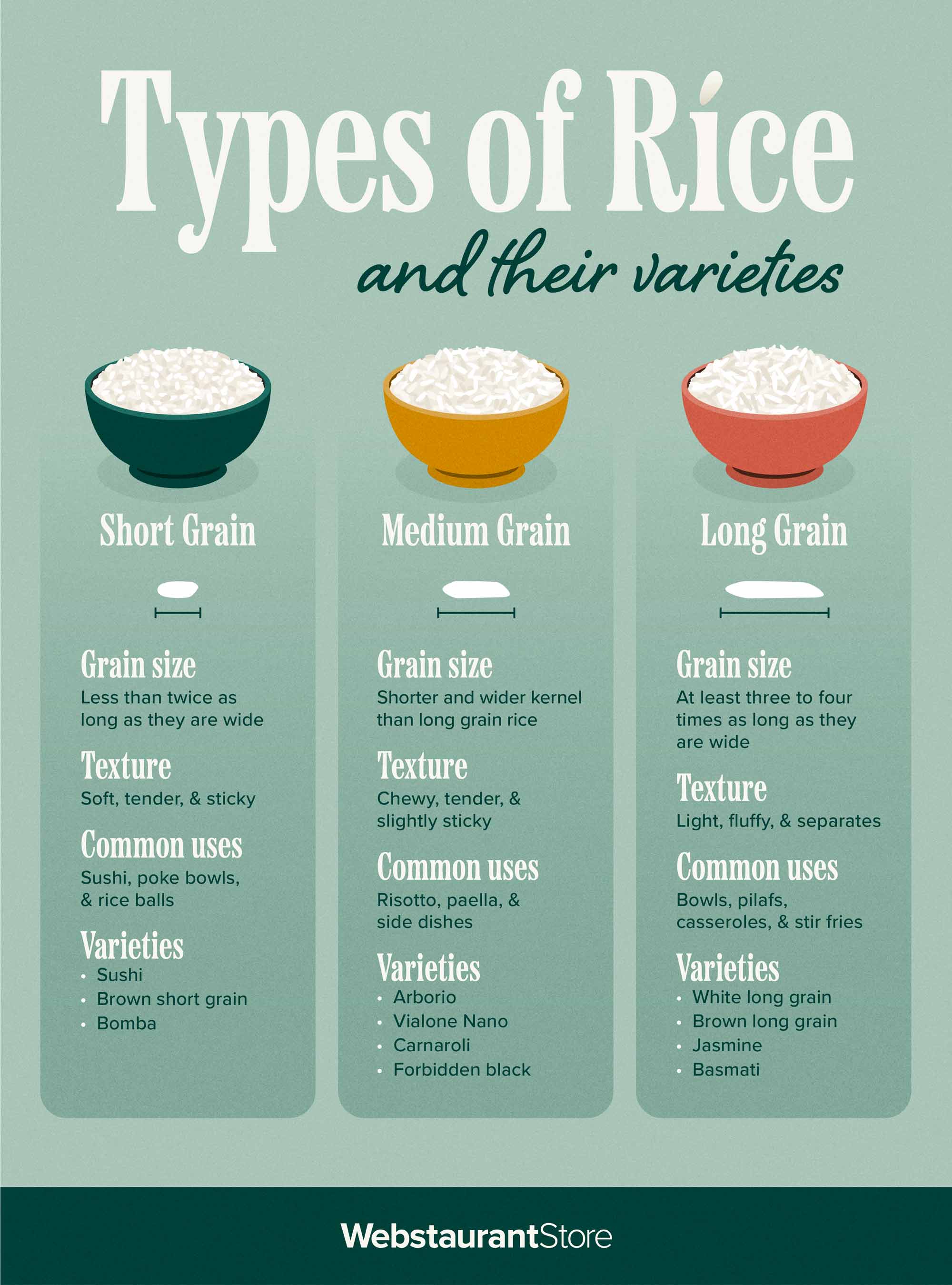
White rice and wild rice differ in terms of flavor and texture. White rice has a neutral flavor and a soft, fluffy texture when cooked. It serves as a versatile base for a variety of dishes. On the other hand, wild rice has a distinct nutty flavor and a chewy texture. Its long, slender grains add a unique element to salads, soups, and grain bowls. The flavorful and slightly firmer texture of wild rice enhances the overall eating experience. Whether you prefer a neutral or nutty taste, both white rice and wild rice provide delicious options for different culinary creations.
White Rice Vs Wild Rice: Taste Profile And Flavor Characteristics
White rice has a neutral taste, making it a versatile base for various dishes. It provides a mild flavor that easily pairs well with different ingredients and seasonings. On the other hand, wild rice has a distinct nutty flavor that adds depth to any dish. Its earthy, aromatic taste adds a unique element to salads, soups, and grain bowls. Whether you prefer a subtle or bold flavor, both white rice and wild rice offer delicious options to enhance your culinary creations.
White Rice Vs Wild Rice: Texture Differences And Mouthfeel
White rice and wild rice have distinct texture differences and mouthfeel. White rice has a soft and fluffy texture when cooked, with each grain separating easily. It has a smooth and tender mouthfeel. In contrast, wild rice has a chewier and slightly crunchy texture even when cooked. Its long grains retain some firmness, providing a satisfying bite. This texture difference adds an enjoyable contrast when combined with other ingredients in dishes like salads or stir-fries. Whether you prefer a softer or chewier texture, both white rice and wild rice offer unique experiences in your meals.
Environmental Impact And Sustainability

White Rice vs Wild Rice: Environmental Impact and Sustainability. Both white rice and wild rice production have environmental considerations and sustainability practices. The cultivation of rice, in general, requires significant amounts of land and water, which can have adverse effects on ecosystems and water resources. However, wild rice has a lower ecological footprint compared to white rice because it grows naturally in aquatic environments without the need for extensive irrigation or chemical inputs. Additionally, sustainable farming methods, such as organic farming and responsible water management practices, can help mitigate the environmental impact of rice production. Overall, choosing sustainably sourced rice options can contribute to a more environmentally friendly food system.
References:
White Rice Vs Wild Rice: Ecological Footprint And Sustainability Practices
White rice production typically has a higher ecological footprint compared to wild rice. The cultivation of white rice often requires large amounts of water and land, contributing to water scarcity and deforestation. Additionally, intensive farming practices for white rice, such as the use of chemical fertilizers and pesticides, can have negative impacts on the environment and biodiversity. On the other hand, wild rice grows naturally in aquatic environments, reducing the need for irrigation and chemical inputs. Choosing sustainably sourced wild rice or opting for organic farming methods can help mitigate the environmental impact of rice production.
White Rice Vs Wild Rice: Environmental Considerations And Farming Methods
White rice production typically has a higher ecological footprint compared to wild rice. The cultivation of white rice often requires large amounts of water and land, contributing to water scarcity and deforestation. Additionally, intensive farming practices for white rice, such as the use of chemical fertilizers and pesticides, can have negative impacts on the environment and biodiversity. On the other hand, wild rice grows naturally in aquatic environments, reducing the need for irrigation and chemical inputs. Choosing sustainably sourced wild rice or opting for organic farming methods can help mitigate the environmental impact of rice production.
Conclusion
https://www.youtube.com/watch?v=_cc0b3QPoGw&pp=ygUrV2hpdGUgUmljZSB2cyBXaWxkIFJpY2U6IEdyYWlueSBEaWZmZXJlbmNlcw%3D%3D
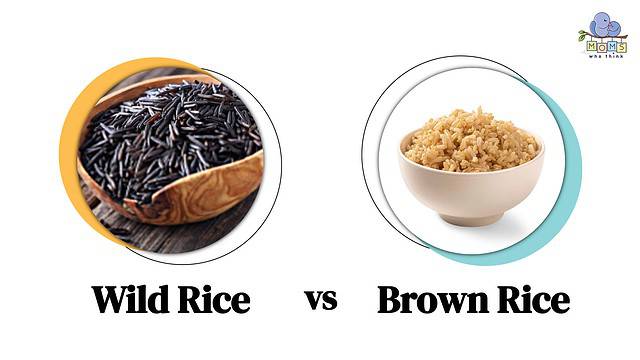
In conclusion, the comparison between white rice and wild rice reveals distinct differences in nutritional content, cultivation methods, cooking techniques, flavor, and environmental impact. While both types of rice have their unique benefits and uses, it is important to consider their individual qualities and choose accordingly based on personal preferences and health goals. Incorporating a variety of rice options into one’s diet can provide a balanced and diverse nutritional profile. Additionally, opting for sustainably sourced wild rice or organic farming methods can contribute to reducing the environmental impact of rice production.
White Rice Vs Wild Rice: Summary And Key Takeaways
In summary, white rice and wild rice have distinct differences in terms of nutritional content, origin, cultivation methods, cooking techniques, flavor, and environmental impact. White rice is a staple in many cuisines and is widely available, while wild rice is a more exotic option with a unique taste and texture. When it comes to nutrition, wild rice stands out with its higher protein and fiber content. However, white rice is often enriched with nutrients. It’s important to consider personal preferences and health goals when choosing between these two types of rice. Incorporating a variety of rice options into one’s diet can provide a balanced nutritional profile. Additionally, opting for sustainably sourced wild rice or organic farming methods can contribute to reducing the environmental impact of rice production.
FAQ About White Rice Vs Wild Rice: Grainy Differences
Q: What is the main difference between white rice and wild rice?
A: The main difference lies in their botanical classification. White rice comes from the Oryza sativa plant, while wild rice is harvested from different species of wild grasses from the Zizania genus.
Q: How do the nutritional profiles of white rice and wild rice compare?
A: Wild rice reigns supreme in terms of nutritional value. It is higher in protein, fiber, and certain minerals like potassium and zinc compared to white rice, which tends to be more processed and stripped of some nutrients.
Q: Which type of rice is better for weight loss or management?
A: Wild rice is generally preferred for weight loss or management due to its higher fiber content. The fiber in wild rice helps in promoting a feeling of fullness, which can aid in controlling food intake and managing weight.
Q: Are there differences in taste and texture between white rice and wild rice?
A: Yes, there are distinct differences. White rice has a milder flavor and a softer, fluffy texture when cooked, while wild rice has a chewier texture and a nuttier, more pronounced taste.
Q: Can both white rice and wild rice be included as part of a healthy diet?
A: Yes, both can be included in a healthy diet. While wild rice offers more nutritional benefits, white rice can still be consumed in moderation as part of a balanced diet.
Q: Are there any allergen concerns associated with white rice or wild rice?
A: Generally, both white rice and wild rice are considered safe for consumption and are not common allergens. However, individuals with specific food allergies or intolerances should always check labels and consult with a healthcare provider.

Salsas by Karoll’s Catering is a vibrant and innovative Canadian fusion family restaurant that welcomes you to indulge in a delightful culinary experience. Every Sunday, from 11 am to 2 pm, we invite you for a delicious brunch that will tantalize your taste buds. Whether you prefer dining in or taking out, we ensure that our delectable dishes are available to savour at your convenience. In addition to our enticing Sunday brunch, we host a lively happy hour every Thursday, Friday, and Saturday. During this time, you can enjoy discounted food items, get $2.50 off on beer, and sip on refreshing $5 margaritas. It’s the perfect opportunity to unwind and relish in the flavours of our Canadian fusion cuisine.